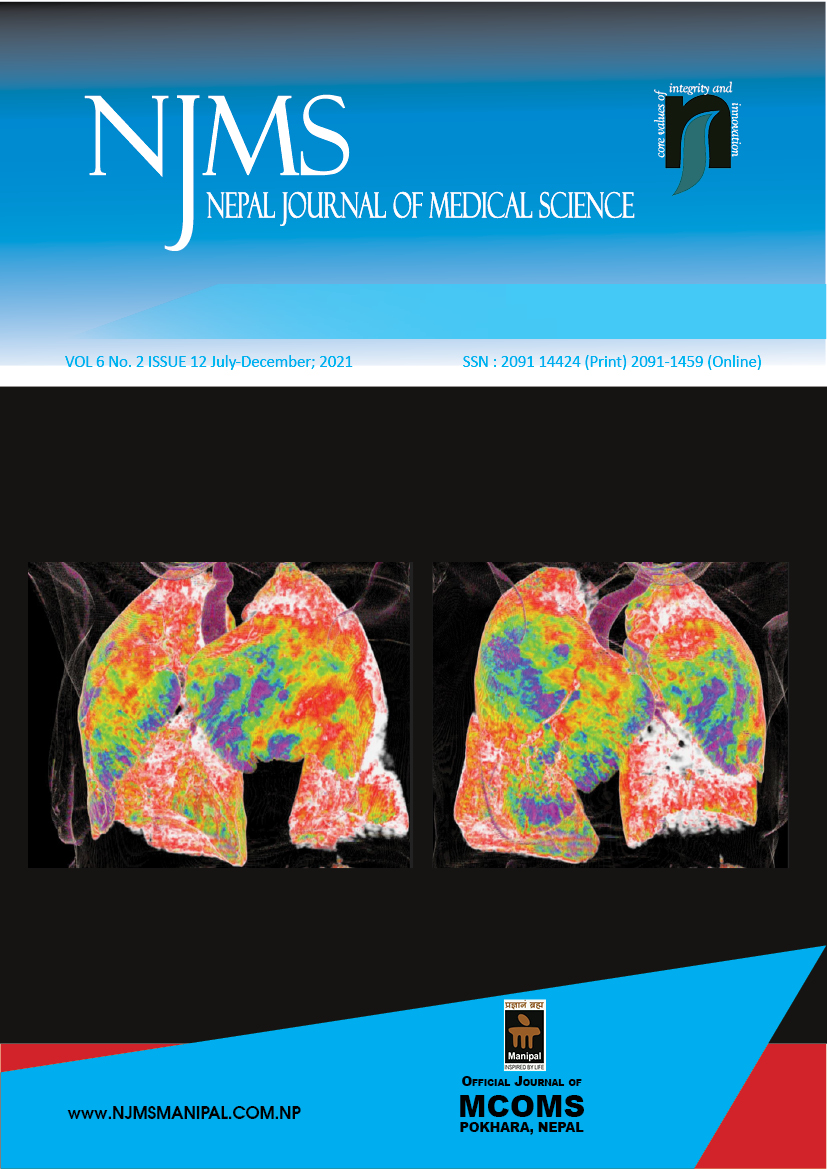Helicobacter Pylori Infection Among Patients Undergoing Upper Gastrointestinal Endoscopy For Dyspepsia
DOI:
https://doi.org/10.3126/njms.v6i2.42399Keywords:
Biopsy, Dyspepsia, Endoscopy, Gastrointestinal, Helicobacter PyloriAbstract
Introduction:
Helicobacter pylori is associated with the pathogenicity of gastroduodenal mucosal lesions, ulcers, and gastric cancers. The present study was undertaken to study the prevalence of H. pylori infection among patients undergoing upper gastrointestinal (UGI) endoscopy for dyspepsia in the Nepalese population.
Methods:
A cross-sectional, hospital-based study was conducted among patients presenting with dyspepsia. Each study patient underwent upper gastrointestinal endoscopy followed by a rapid urease test or histopathology from the biopsy sample for H. pylori detection. Data analysis was done by SPSS 20.
Results:
The mean age of the patients was 43±11.65 years (M: F=1.4:1) with male predominance. The prevalence of H. pylori infection was 53.2% among the dyspeptic patients undergoing UGI endoscopy. The H. pylori infection was significantly associated with gastritis, duodenitis, gastric ulcer, duodenal ulcer, and gastric cancer (p <0.05).
Conclusion:
This study demonstrates a high prevalence of H. pylori among patients undergoing UGI endoscopy for dyspepsia.
Downloads
Downloads
Published
How to Cite
Issue
Section
License
Copyright (c) 2022 Nepal Journal of Medical Sciences

This work is licensed under a Creative Commons Attribution 4.0 International License.
Copyright © by Nepal Journal of Medical Sciences. The ideas and opinions expressed by authors of articles summarized, quoted, or published in full text in this Journal represents only opinions of authors and do not necessarily reflect the official policy of Nepal Journal of Medical Sciences or the institute with which the author(s) is (are) affiliated, unless so specified.




